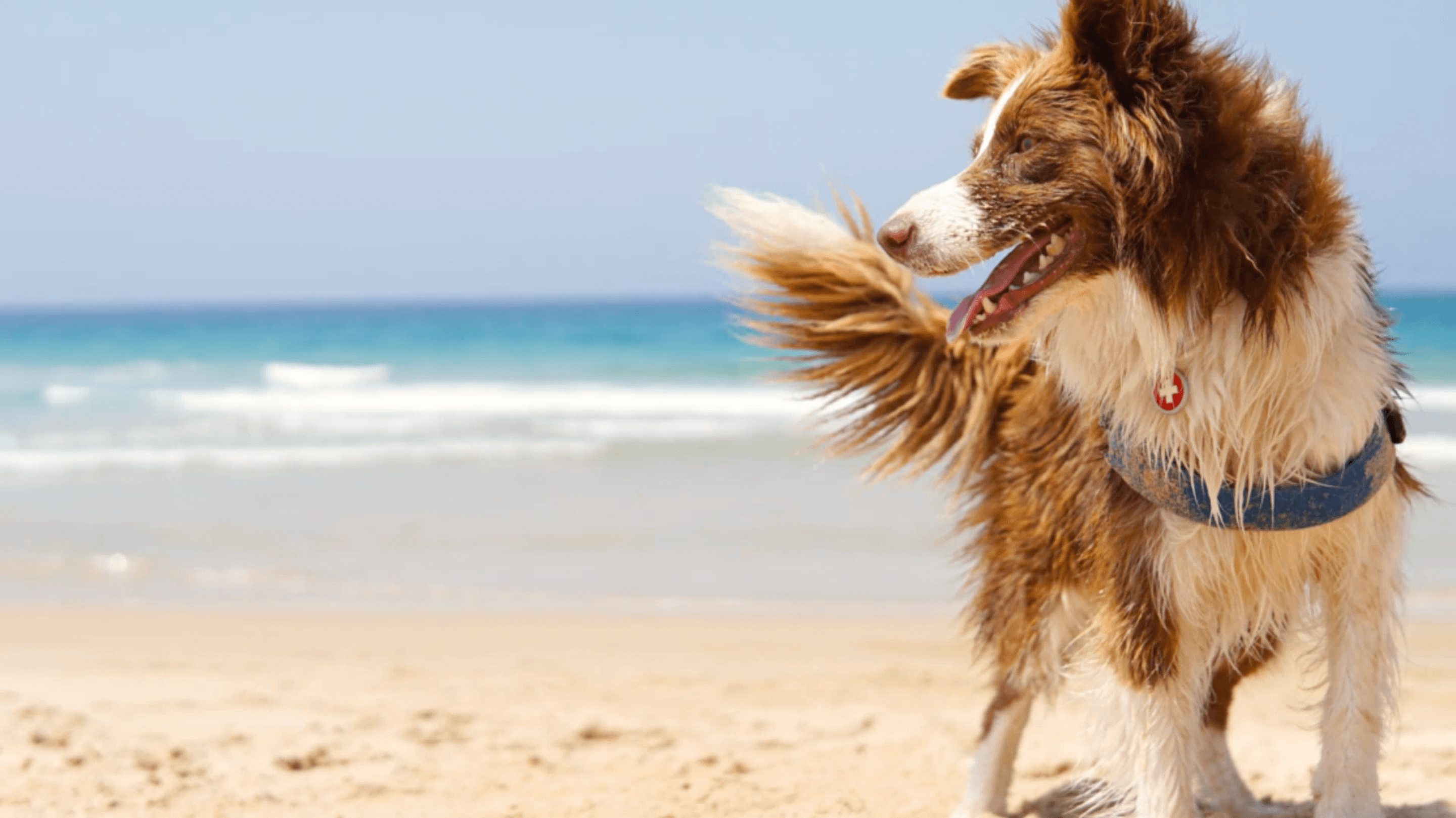As a pet owner in sunny South Florida, my family is used to blazing summer heat and humidity practically year-round. Of course, that family also includes our hyperactive Standard Poodle, Brodie. Nothing excites him more than seeing someone wear sneakers (that means it's time for a walk!), stepping into the backyard (that means it's time to play chase!), or even simply lying near the pool himself as he soaks in the summer sun (zzzzz...). As responsible owners, however, it's important to be able to judge when there's a possibility of heatstroke. Whereas we can sweat and fan ourselves to beat the heat, dogs are far more susceptible to suffer from it. After all, they’re constantly wearing fur coats!
The majority of the problem stems from the fact that, except in minor areas on their paws, dogs can’t sweat. Instead, they pant to cool down, releasing some of the heat in their bodies through their breath. This may not always be enough, though, particularly in Florida-like conditions where the air around them is hot and humid.
If panting doesn’t work fast enough, a dog’s body temperature can begin to rise, and that’s when things become dangerous. Heatstroke can be fatal in dogs if an owner fails to recognize it and help their dog in time. High temperatures can eventually cause problems as severe as internal organs swelling up.
How to Tell if Your Dog Has Heastroke
Luckily, if you’re paying attention, the symptoms shouldn’t be difficult to pick out. According to PetMD, panting is the first and most obvious sign, along with a lack of energy and unwillingness to move. If your furry friend isn’t acting like their normal, playful self, that should already be a warning sign. Additionally, look for drooling, reddened gums, vomiting, diarrhea, drunken behavior, uncoordinated movement, and collapse.
These are big red flags, as well as signs that you should treat your dog immediately and call your vet.If your dog is beginning to show symptoms, take them out of the hot area immediately, or at least bring them to a shady spot if air conditioning isn’t available. Do not give your dog Aspirin – it can lead to other problems and further endanger your friend.
Options and tips to avoid heatstroke and help your dog cool down safely:
- Put your dog in the bathtub. Or, find a hose—and make sure to let any hot water out of the hose first before hosing your dog down. If you cannot submerge your dog in water, place a towel on his back and continue to soak the towel and your dog in cold water.
- Do not submerge your dog’s head in the water. Keep the head elevated to prevent aspiration pneumonia
- Run a cool shower over your pet, covering the whole body—especially the back of the head and neck
- Let your dog drink as much cool water as he wants without forcing him to drink.
- Call your veterinarian or the nearest emergency animal clinic and tell them you are on your way! They will tell you what to do next based on your dog’s symptoms and how far away you are from the clinic.
Additionally, PetMD recommends taking these steps once you’ve begun treatment, even if your dog appears to be recovering!
- Check for signs of shock. Your veterinarian can walk you through what to look for.
- Take the dog’s temperature every five minutes, continuing water-cooling until your dog’s temperature drops below 103°F (39.4°C).
- If the dog’s temperature drops a little more—to around 100°F (37.8°C)—don’t worry. A slightly low temperature is a lot less dangerous.
It’s important to note that, while all dogs are susceptible to heatstroke, those who are older, overweight, have thick coats, short noses, or smooshed faces (like Pugs or Bulldogs) are especially prone. Even if your furry friend doesn’t fall under one of these categories, you should still keep an eye on them!
Preventative Measures for Sunstroke
Of course, none of this means that you should deprive your pup of their exercise or playtime. When going outside for some together time, the best method to ensure it’s not too hot is using common sense. If the heat is too much for you to withstand for very long, then it’ll be unbearable for your dog. If you don’t always trust your judgment or want to be sure, several sources suggest the 5-second rule. Place the back of your hand on the pavement; if you can’t hold it there for 5 seconds, then it’s probably too hot to go for a walk.
This isn’t just to avoid heatstroke, either; those squishbeans can burn! Take it from me, as cute as it is watching your dog high-step because he has to wear booties or meticulously pull said booties off time and time again, it’s not worth seeing your friend stuck indoors with minimal playtime on their vet’s orders. It’s too sad.
Alternate Activities
The good news is, you can still keep your dog active even if it’s 105 degrees outside with 70% humidity. If you really want to be outside, make one of those heatstroke fighters fun and go for a swim together! Just don’t forget to hose your pup off afterward if you take them in the pool or to the ocean. If your dog isn’t a fan of swimming, though, indoor games of fetch or chase are always welcome during the heat of the day.
Lastly, if you live in a state with constant heat like Brodie and me, you can always take your dog on a walk either early in the morning or sometime in the evening when the sun isn’t as unforgiving. All dogs deserve to have as much summer fun as we do, after all; best to make sure that the hot days stay fun!






